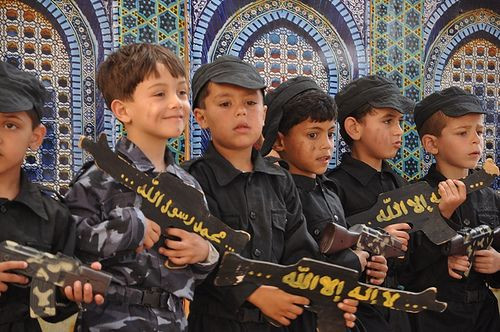Child Abuse Rates Rise Alongside Income Inequality, Signaling Deeper Rifts Among Equal And Unequal Societies

It isn’t simply poverty that may lead to the mistreatment of children, but the differences between the poor and the rich, argues a new study that found child abuse rates and income inequality rise and fall together with startling regularity across U.S. counties.
Researchers have known for some time that more equal societies enjoy, among other things, better overall health and fewer social problems compared to less equal ones. The present study now suggests that forms of child abuse, ranging from verbal abuse to physical and sexual abuse to neglect, uphold that relationship — motivating an even greater need, especially in the U.S., to monitor children’s mental health and living condition.
“Certainly, poor counties with general, overall poverty have significant problems with child abuse,” said John J. Eckenrode, lead author of the study and professor of human development at Cornell University, in a statement. “We were more interested in geographic areas with wide variations in income,” such as those in suburban regions and inner cities or within one region, such as the vastly divided borough of Brooklyn, N.Y.
Economists may quibble over certain things, but what’s irrefutable is America’s income inequality problem. Yale professor and Nobel Prize-winning economist Robert J. Schiller has said it is the “most important problem that we are facing now today.” The gap between the richest one percent of the country and the rest of the U.S. is now the largest it’s been since the 1920s, and experts are confident it’s only expanding.
At the short end of the stick, of course, are the people at the bottom — their children in particular. Kids that grow up in poverty face a mind-boggling number of risks. They’re more likely to murder, be murdered, deal drugs, do drugs, lose intelligence, develop poor hearing ability, and suffer from cancer and generalized anxiety disorder later in life. Now, the team claims, throw child abuse into the mix.
The team looked at data on reports of child abuse and neglect from 2005 to 2009, obtained from the National Child Abuse and Neglect Data System across all 3,142 American counties. It is the first study to examine child abuse in places with the greatest gap between rich and poor, the team asserts.
Abuse rates are fuzzy by nature, but current estimates from state and local child protective services reveal 3.7 million referrals of abuse or neglect were registered in 2011. Of the victims, 79 percent were victims of neglect, 18 percent of physical abuse, nine percent of sexual abuse, and 10 percent of various other types, including threatened abuse, parent drug and alcohol abuse, and lack of supervision.
The cumulative effects of such abuse don’t remain locked into childhood development either, the team adds. Prolonged exposure to abuse and neglect, in tandem with the detrimental effects naturally induced by poverty, often make for a lifelong battle that, unfortunately, is often fought uphill.
“Child maltreatment is a toxic stressor in the lives of children that may result in childhood mortality and morbidities and have lifelong effects on leading causes of death in adults,” the researchers wrote. “This is in addition to long-term effects on mental health, substance use, risky sexual behavior and criminal behavior … increased rates of unemployment, poverty, and Medicaid use in adulthood.”
Source: Eckenrode J, Smith E, McCarthy M, Dineen M. Income Inequality and Child Maltreatment in the United States. Pediatrics. 2014.



























